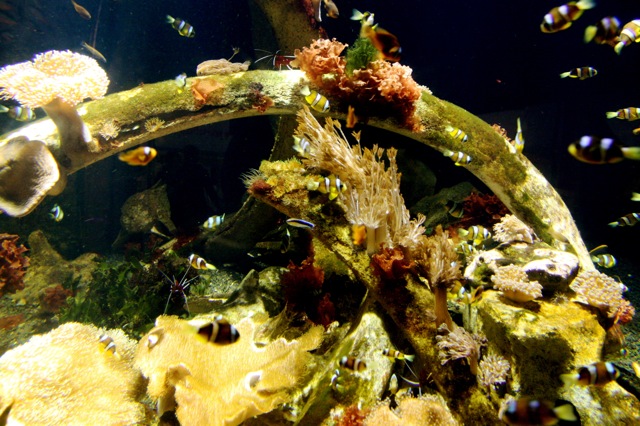Six tips for underwater photography this summer

Many Americans will going out of town this weekend for Independence Day. For those of you hitting the beach and planning some underwater adventures, here are some tips on how to capture those moments with your waterproof camera.
EQUIPMENT Most of you will be traveling underwater with a waterproof camera (hopefully). This usually comes in the form of a point-and-shoot. While the labels might say "waterproof" sometimes they're just water-resistant up until a certain amount of feet underwater, so be sure to check how far you can go before diving in. If you're serious about your photography and insist on bringing a DSLR, it is possible so long as you take the right protective casing along. Olympus America has a detailed list about how to care for the camera with a list of tools you'll need to pick up and how to do a test run before taking the plunge.
FLASH Depending on the time of day, light is going to be limited down there. Thus, you're probably going to need to turn your flash on. If you don't have much time, best to just leave it on auto-flash with auto white balance as well. This isn't to say you shouldn't experiment without flash, but don't rely on this option. An alternative to using the built-in flash (or using an external if you have the right waterproof casing for it) is bringing along a waterproof strobe light that you can move around, giving you much more manual control.
FOCUS When shooting underwater, you want to get as close to your subjects as possible (maximum four feet away). Sometimes there's room for wider shots, which will require some composition so it doesn't look too fake. If you're shooting a person or a fish (or mermaid, who knows?), make sure the face is in focus or it will just end up looking bad. Best way to do this is by using macro mode. On waterproof compact cameras, there should be an "underwater" preset function that you can play around with as well. Some cameras will even have a combined function, so if you're in the market for a camera to take underwater, make sure this is available.
SHUTTER SPEED/ISO To keep things further in focus, you'll need a semi-fast shutter speed. Underwater Photography Guide advises a minimum 1/30th for still subjects and up to 1/125th of a second for nabbing images of those speedier fish. To match, the suggest the lowest ISO possible and the largest resolution available on your camera to maximize what you have to work with.
BACKSCATTER Backscatter is a problem most photographers of all skill levels will face underwater. This is when those little annoying white particles get picked up in the image and just ruin everything. Photographer Stephen Frink suggests moving a strobe light "away from the lens, typically at a 45-degree angle above and to the side of the subject."
INSPIRATION Underwater isn't the most typical photo shoot setting, so not everything is going to be intuitive. It would be a good idea to research beforehand what kind of plants and creatures are inhabiting the body of water you'll be exploring so you know what to look for (and what to avoid if there are predators). Furthermore, a little inspiration never hurt anyone. Flickr has a wealth of incredible underwater photos to flip thorough, and also check out CNET's underwater photo contest from last year. (Some excellent macro shots in there.) Naturally, you shouldn't copy these photos, but rather build upon them and find your own treasure.
However, if going underwater isn't your thing but you are definitely breaking out the camera for some Fourth of July fun, be sure to check out our tips on capturing fireworks displays as well as photographing parades. If you have tips and experience about photographing underwater, please share them in the TalkBack section! Happy Independence Day!
Related coverage on ZDNet:
